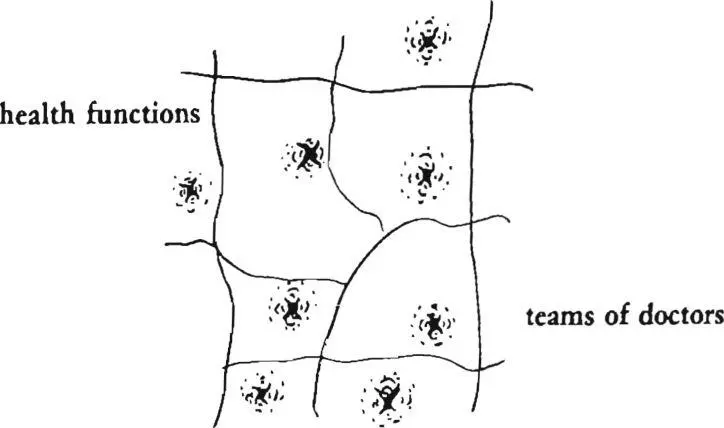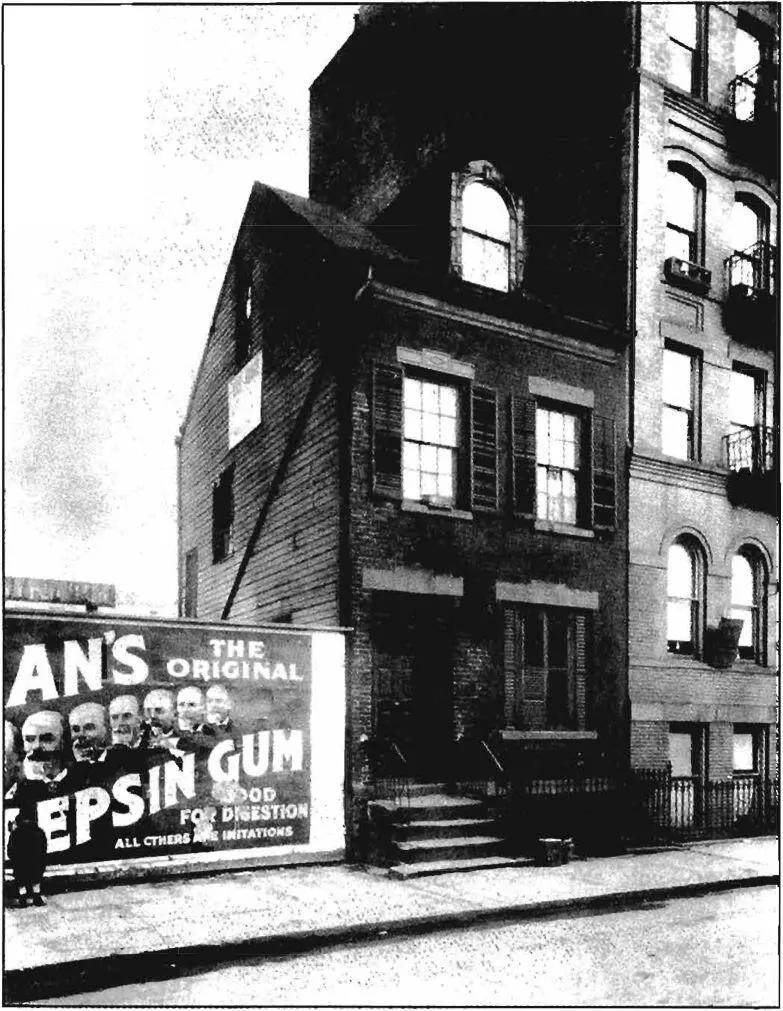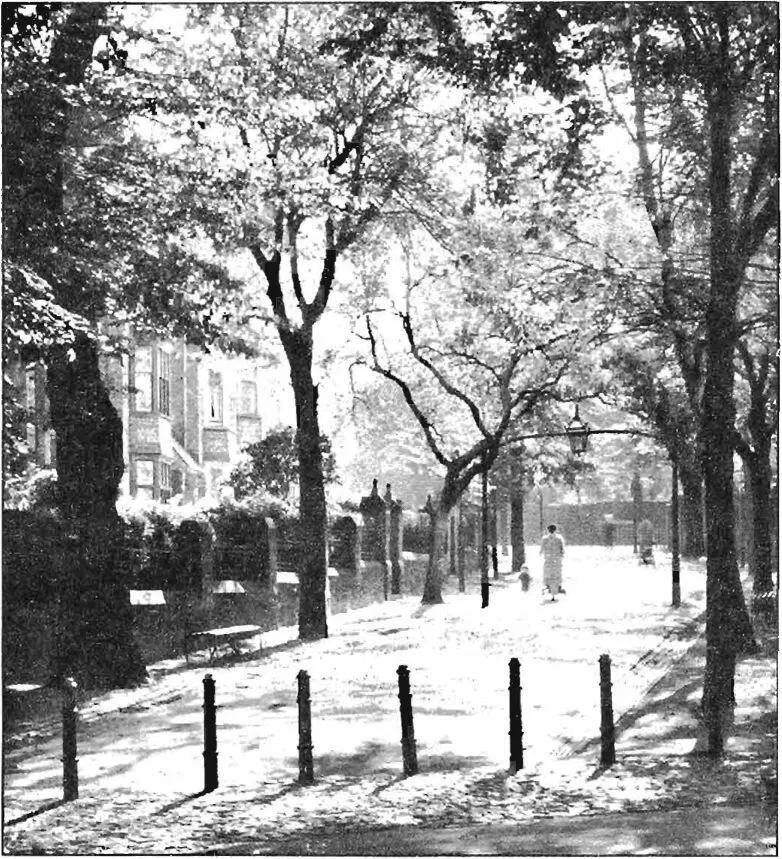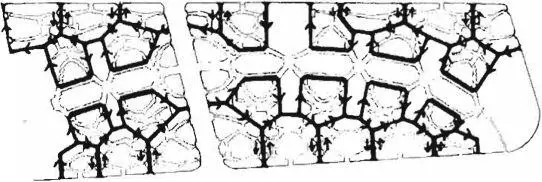Christopher alexander - A pattern language
Здесь есть возможность читать онлайн «Christopher alexander - A pattern language» весь текст электронной книги совершенно бесплатно (целиком полную версию без сокращений). В некоторых случаях можно слушать аудио, скачать через торрент в формате fb2 и присутствует краткое содержание. Жанр: Прочая научная литература, на английском языке. Описание произведения, (предисловие) а так же отзывы посетителей доступны на портале библиотеки ЛибКат.
- Название:A pattern language
- Автор:
- Жанр:
- Год:неизвестен
- ISBN:нет данных
- Рейтинг книги:3 / 5. Голосов: 1
-
Избранное:Добавить в избранное
- Отзывы:
-
Ваша оценка:
- 60
- 1
- 2
- 3
- 4
- 5
A pattern language: краткое содержание, описание и аннотация
Предлагаем к чтению аннотацию, описание, краткое содержание или предисловие (зависит от того, что написал сам автор книги «A pattern language»). Если вы не нашли необходимую информацию о книге — напишите в комментариях, мы постараемся отыскать её.
A pattern language — читать онлайн бесплатно полную книгу (весь текст) целиком
Ниже представлен текст книги, разбитый по страницам. Система сохранения места последней прочитанной страницы, позволяет с удобством читать онлайн бесплатно книгу «A pattern language», без необходимости каждый раз заново искать на чём Вы остановились. Поставьте закладку, и сможете в любой момент перейти на страницу, на которой закончили чтение.
Интервал:
Закладка:
 |
| ❖ *t* |
Keep the medical teams small and independent—small services without red tape (81), but coordinated with each other and other clinics, like birth places (65)—throughout the town. Give each center some functions that fuse with the ordinary course of local work and recreation: swimming pool, workshops, sauna, gym, vegetable garden, greenhouse. But don’t force these facilities to form a continuous “health park”—knit them together loosely with other parts of the town—housing in between (48), local sports (72), adventure playcround (73), home workshop (157), vegetable garden (177). Perhaps the most important subsidiary pattern for helping people to keep healthy is the opportunity for swimming; ideally, try and put a swimming pool on every block—still water (71). . . .
255
SUMMARY OF THE LANGUAGE
172. GARDEN GROWING WILD
173. GARDEN WALL
174. TRELLISED WALK
175. GREENHOUSE
176. GARDEN SEAT
177. VEGETABLE GARDEN
178. COMPOST
go back to the inside of the building and attach the necessary minor rooms and alcoves to complete the main rooms j
179. ALCOVES
180. WINDOW PLACE I 8 I. THE FIRE
182. EATING ATMOSPHERE
183. WORKSPACE ENCLOSURE
184. COOKING LAYOUT
185. SITTING CIRCLE
186. COMMUNAL SLEEPING
187. MARRIAGE BED
188. BED ALCOVE
189. DRESSING ROOM
fine tune the shape and size of rooms and alcoves to make them precise and buildable;
190. CEILING HEIGHT VARIETY
XXX
| 48 HOUSING IN BETWEEN** |
|---|
 |
256
. . . most housing is in residential neighborhoods, and in the dusters within neighborhoods—identifiable neighborhood (14), house cluster (37); and according to our patterns these housing areas need to be separated by boundaries which contain public land and work communities—subculture boundary (13), NEIGHBORHOOD BOUNDARY (15), WORK COMMUNITY (41). But even these work communities, and boundaries, and shopping streets, must contain houses which have people living in them.
Wherever there is a sharp separation between residential and nonresidential parts of town, the nonresidential areas will quickly turn to slums.
The personal rhythms of maintenance and repair are central to the well being of any part of a community, because it is only these rhythms which keep up a steady sequence of adaptations and corrections in the organization of the whole. Slums happen when these rhythms break down.
Now in a town, the processes of maintenance and repair hinge on the fact of user ownership. In other words, the places where people are user-owners are kept up nicely; the places where they are not, tend to run down. When people have their own homes among shops, workplaces, schools, services, the university, these places are enhanced by the vitality that is natural to their homes. They extend themselves to make it personal and comfortable. A person will put more of himself into his home than into any of the other places where he spends his time. And it is unlikely that a person can put this kind of feeling into two places, two parts of his life. We conclude that many parts of the environment have the arid quality of not being cared for personally, for the simple reason that indeed nobody lives there.
It is only where houses are mixed in between the other functions, in twos and threes, in rows and tiny clusters, that the personal quality of the households and house-building activities gives energy to the workshops and offices and services.
TOWNS
Therefore:
Build houses into the fabric of shops, small industry, schools, public services, universities—all those parts of cities which draw people in during the day, but which tend to be “nonresidential.” The houses may be in rows or “hills” with shops beneath, or they may be free-standing, so long as they mix with the other functions, and make the entire area “lived-in.”


Z
occasional houses

❖ •$*
Make sure that, in spite of its position in a public area, each house still has enough private territory for people to feel at home in it—your own home (79). If there are several houses in one area, treat them as a cluster or as a row—house cluster (37), row houses (38). . . .
258
between the home clusters and work communities , allow the local road and path network to grow informally , 'piecemeal:
| 49- | LOOPED LOCAL, ROADS |
| 50. | T JUNCTIONS |
| Si- | GREEN STREETS |
| 52- | NETWORK OF PATHS AND CARS |
| 53- | MAIN GATEWAYS |
| 54- | ROAD CROSSING |
| 55- | RAISED WALK |
| 56. | BIKE PATHS AND RACKS |
| 57- | CHILDREN IN THE CITY |
| 259 |
| 49 LOOPED LOCAL ROADS** |
|---|
 |
260
. . . assume that neighborhoods, house dusters, work communities, and major roads are more or less defined—local transport
AREAS ( I I ) , IDENTIFIABLE NEIGHBORHOOD ( I 4) , PARALLEL ROADS (23), HOUSE CLUSTER (37), WORK COMMUNITY (41). NOW, for the layout of the local roads.
♦£*
Nobody wants fast through traffic going by their homes.
Through traffic is fast, noisy, and dangerous. At the same time cars are important, and cannot be excluded altogether from the areas where people live. Local roads must provide access to houses but prevent traffic from coming through.
This problem can only be solved if all roads which have houses on them are laid out to be “loops.” We define a looped road as any road in a road network so placed that no path along other roads in the road network can be shortened by travel along the “loop.”
The loops themselves must be designed to discourage high volumes or high speeds: this depends on the total number of houses served by the loop, the road surface, the road width, and the number of curves and corners. Our observations suggest that a loop can be made safe so long as it serves less than 50 cars. At one and one-half cars per house, such a loop serves 30 houses; at one car per house, 50 houses; at one-half car per house, 100 houses.
Here is an example of an entire system of looped local roads designed for a community of 1500 houses in Peru.
 |
| Looped local roads in Lima. |
26 I
Even a simple grid can be changed to have looped local roads.
Читать дальшеИнтервал:
Закладка:
Похожие книги на «A pattern language»
Представляем Вашему вниманию похожие книги на «A pattern language» списком для выбора. Мы отобрали схожую по названию и смыслу литературу в надежде предоставить читателям больше вариантов отыскать новые, интересные, ещё непрочитанные произведения.
Обсуждение, отзывы о книге «A pattern language» и просто собственные мнения читателей. Оставьте ваши комментарии, напишите, что Вы думаете о произведении, его смысле или главных героях. Укажите что конкретно понравилось, а что нет, и почему Вы так считаете.












